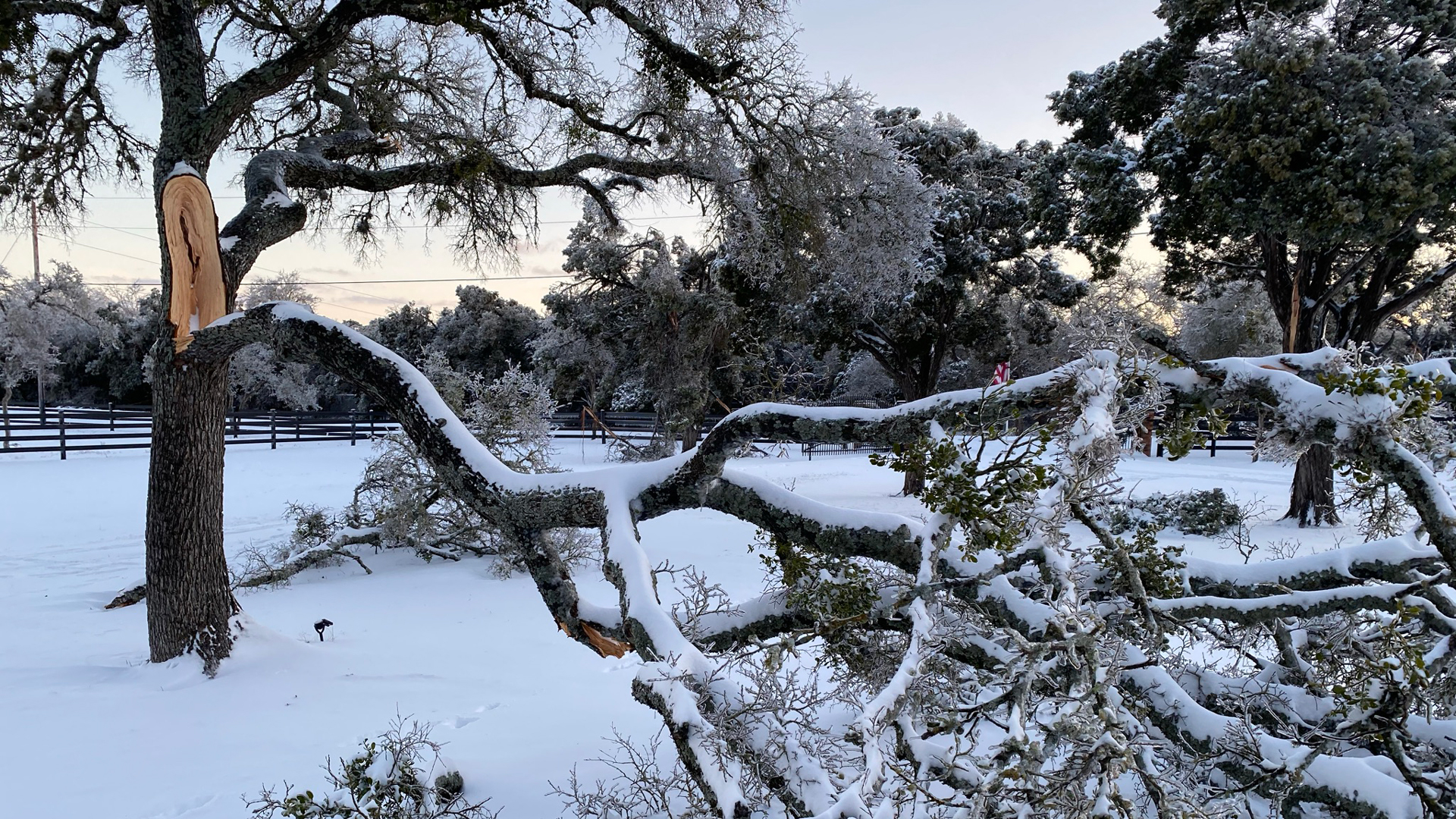Oak wilt season is upon us. Only make cuts that are absolutely necessary. Save any cosmetic pruning for later in the year.
While San Antonio largely dodged the severity of ice storms many of our neighboring communities suffered recently, some of us, particularly those along the northern fringes of the city, still saw some damage to trees overladen with ice.

Ice storms can cause significant damage to otherwise healthy trees with the weight of the ice cracking and sending limbs crashing down. The aftermath is usually a frenzy of quick cuts and clean-up to get dangerous branches down before they cause more harm. But before you get too eager in your pruning, consider the long-term health of your trees — especially if you have oak trees.
Oak wilt season is upon us and warmer days can entice oak wilt-carrying beetles to seek out freshly damaged or cut branches to colonize. These particular beetles feed on the oozing sap a tree exudes to help with wound healing. That’s why it’s critical to immediately paint any cuts with tree wound dressing or latex-based paint. Paint after a cut is made, before the next cut is initiated.

It’s also prudent to sterilize your tools in between trees using a Lysol or 10-percent bleach solution to prevent spreading of pathogens from one tree to the next. Similarly, if hiring someone else to prune your trees, make sure they properly sanitize their tools before starting work on your property, and in between individual trees.
Because the threat of oak wilt is so high this time of year (February through June), only make cuts that are absolutely necessary for safety purposes and wait until later in the year to do any cosmetic pruning.
Of course, always exercise caution while on ladders and especially when cutting near electrical lines. When in doubt, call a licensed arborist to assist as they have the tools and training to safely remove limbs where dangerous situations may exist.


